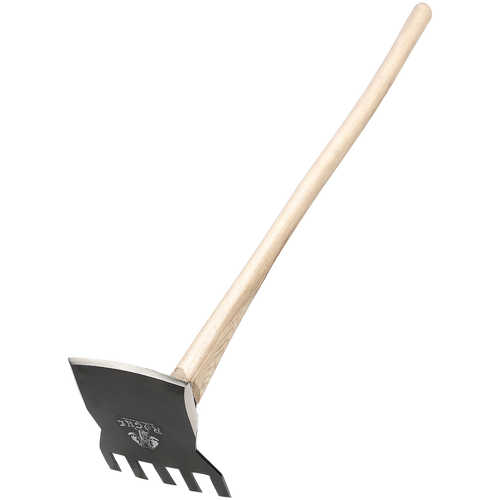I recently helped DebW (the adopter) clear a section of the MA AT that I call "Stickerbush Alley" (lots of blackberry etc, between Becket and Walling Mts, just N of the Mass Pike). This is ~1 mile of fairly smooth and wide ridge where hobble bush, ferns, blackberry, and raspberry often encroach on the trail. In some places the stickers were above my head and hikers were emerging bloodied...
We used a variety of tools:
* A gas-powered trimmer with a metal blade. Very effective. Was rated to cut up to 3/4 inch wood. Noisy. A bit heavy to carry. (We only had the trimmer for one day and had to finish with hand tools.)
* Swizzle stick: OK on ferns, but difficult to use on the heavier stuff (sticker bushes and hobble bush). You need space to swing it and it catches on rocks and blowdowns (wood) hidden in the brush.
* Hedge shears (similar to
http://www.stihlusa.com/handtools/PH90-Hedge-Shear.html. Mine were 22" long with a 9" blade.) Very effective. Can cut up to ~1/4" wood. Requires bending over to get low brush. Wear work gloves (preferably padded) to reduce the wear-and-tear on your wrists. My shears were a bit heavier (3 lb) than DebW's--heavier to carry, but the weight probably reduced the wear-and-tear on my wrists.
* Loppers to get blowdowns hidden in the brush.
The powered trimmer was the fastest. We operated in a team of two--the first used the trimmer and the second followed with loppers to clean up some of the details. Running the trimmer was hot work and we found it worthwhile to switch off while the other rested and followed. Eye protection is required--I got hit in the face by a rock chip.
On the second day (no trimmer) we used a combination of the three hand tools. The shears were used for the vast majority of the work--I cleared sizable sections with the shears alone. If I could only carry two tools for this section, I would carry the shears and loppers. However, if I was clearing a large amount of grass with no heavier brush, I would probably carry the swizzle stick.
Doug


